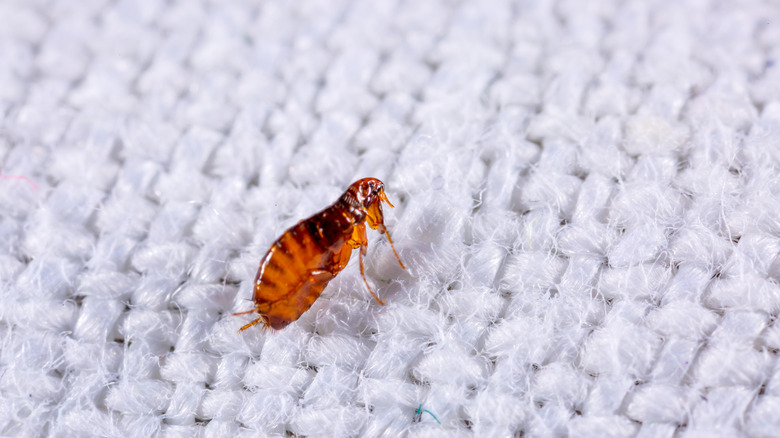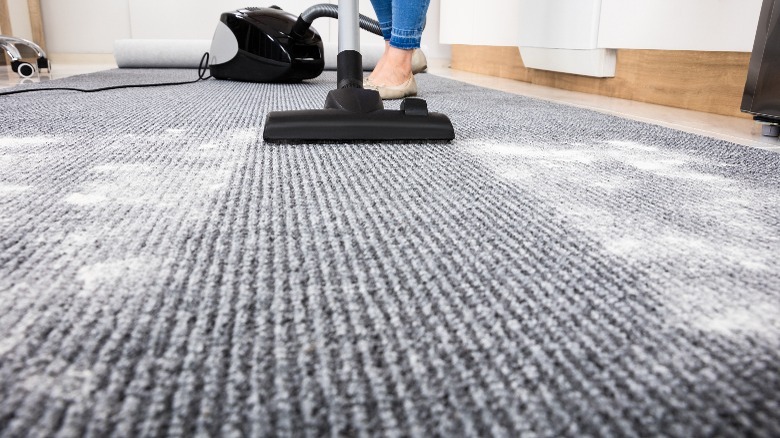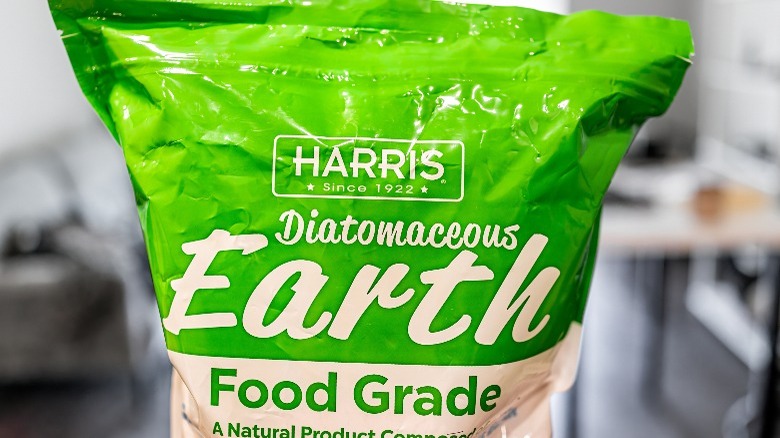Fleas Will Be A Thing Of The Past With One Handy Kitchen Staple
If you have a pet and you live in a place that has humidity in the summer, you likely have fleas and ticks to combat. Fleas can become an infestation quite easily if you don't practice extreme vigilance. One female flea lives two to three months, and in that time, she will lay approximately 2,000 eggs — up to 50 eggs per day! An infestation of an alarming proportion can happen in as little as two to three weeks. Here's the good news: you can get rid of fleas in your home with table salt, and we're going to tell you how.
Of course, it's not only salt that you'll need in order to keep fleas in check, but if you've had an infestation, it can help you get them out of your home and keep them out. Some states battle ticks and fleas worse than others, and if you're in a place where they thrive, pets can get a pretty bad case before you know it. Eggs can be difficult to see, and they fall off your pets all throughout the house. When the timing is right, and there's food around, the eggs hatch. Interrupting their life cycle is the key.
How to use salt to keep fleas at bay
The first thing to understand is that fleas have an exoskeleton, meaning they have an extreme vulnerability to anything with moisture-zapping qualities. Enter table salt. Grind the salt into as fine of a powder as possible and rub it into the fabrics well. Sprinkle it evenly over carpeting and furniture and leave it on there for 12 to 48 hours. Don't allow pets in treated areas until finished, so you may need to do it in sections.
Be sure to empty the vacuum cleaner outdoors immediately after you thoroughly vacuum all the salt back out of the carpet. Otherwise, any live ones you vacuum up will climb back out. You will need to complete these steps more than once. Flea eggs may still survive because the salt has to make contact with the exoskeleton to work, so stay vigilant and do salt treatments at least once every one to two weeks afterward until you feel confident that they're gone.
Use diatomaceous earth
Since we mentioned fleas have exoskeletons, this means they're also vulnerable to diatomaceous earth, a natural form of pest control made from soft sedimentary rock. The food-grade diatomaceous earth is effective at controlling fleas in much the same way as salt. The best thing about both salt and diatomaceous earth is that they're both environmentally friendly and do not pose any risk as harsh chemicals do. However, both of these methods have limited efficacy in a bad infestation.
Be sure you wear gloves and a face mask when applying DE, especially indoors. Sprinkle diatomaceous earth generously over all carpeting, flooring, and upholstery. Do sections at a time so that your pets stay out of the area you're treating for one to three days. After that, vacuum up the DE thoroughly and immediately remove the contents from the vacuum outdoors. Repeat the entire process every one to two weeks until you don't see them anymore.
Apple cider vinegar will also help repel fleas
While apple cider vinegar won't kill fleas that are already plaguing your house and your pet, it will repel them. This kitchen staple is a great way to keep more fleas from coming back once you've killed the ones on your pet and in your home. Because fleas despise the scent and flavor of apple cider vinegar, they will stay away from areas or pets sprayed with it.
Simply combine one part water and one part apple cider vinegar into a spray bottle and spritz it in areas where fleas were previously a problem. The solution can also be lightly sprayed on your dog or cat, but make sure to avoid their face. The repellent properties don't last long and the spray will likely need to be reapplied often. Once you've used salt or diatomaceous earth to kill the fleas in your home, apple cider vinegar will continue to repel these pesky insects.



